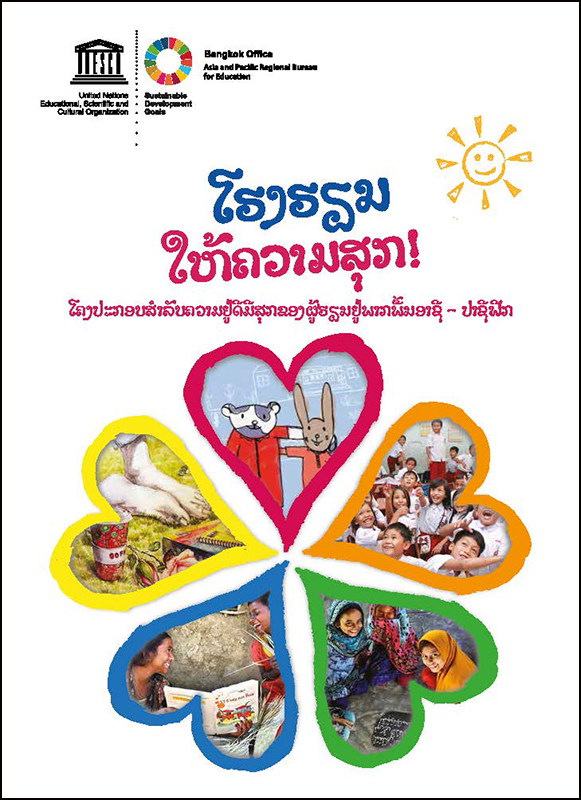Happy Schools! A Framework for Learner Well-being in the Asia-Pacific
The Happy Schools Project was launched in June 2014 in the aim of promoting learner well-being and holistic development in schools.
The 2016 report - Happy Schools! A Framework for Learner Well-being in the Asia-Pacific – is one of the main outcomes of the project and features 22 criteria for a happy school as well as promising and innovative practices based on voices from the school level. In light of today’s competitive, stress-fueled and test-focused world, the Happy Schools Project aims to offer an alternative notion of the quality of education that values and nurtures learners’ diverse talents and strengths.
![]() View / Download FULL TEXT [English] [Lao] [Thai/Summary] [Japanese/Summary]
View / Download FULL TEXT [English] [Lao] [Thai/Summary] [Japanese/Summary]
Background
UNESCO Bangkok launched the first ever report on happy schools and learner well-being in the Asia-Pacific region on 25 March 2016.
The report, Happy Schools: A Framework for Learner Well-being in the Asia-Pacific, which was launched following International Day of Happiness on 20 March 2016, addresses the challenges faced by students in today’s competitive, stress-fuelled, and test-focused world.
The importance of happiness was recently recognized in the United Nations General Assembly 2011 Resolution(link is external) as ‘a fundamental human goal’ and in the Sustainable Development Goals (SDGs) as related to the quality of education and well-being.
Global indices such as the Better Life Index(link is external) and international assessments including PISA(link is external) aim to measure the linkages between learner happiness and the quality of education.
People, Process and Place
In June 2014, UNESCO Bangkok launched the Happy Schools Project to find out ‘what makes for a happy school’ based on the voices of students, teachers, parents and others at the heart of the school community. Research was conducted from June 2014 to November 2015 to identify the criteria for a happy school, consisting of qualitative variables that could potentially be measured. The research methods included a desk study, a workshop with schools from ASEAN member countries, a survey, and a seminar.
The 2014-2015 research study produced the Happy Schools Framework, which consists of 22 criteria for a happy school, grouped into three broad categories of People, Process and Place, as well as strategies for achieving these criteria in schools. The framework calls for education systems to shift away from traditional measures and embrace a diversity of talents and intelligence by recognizing values, strengths and competencies that contribute to enhancing happiness. Suggested criteria for achieving these goals include supporting positive teacher attitudes and attributes, encouraging learner freedom, creativity and engagement, and creating a warm and friendly learning environment.











